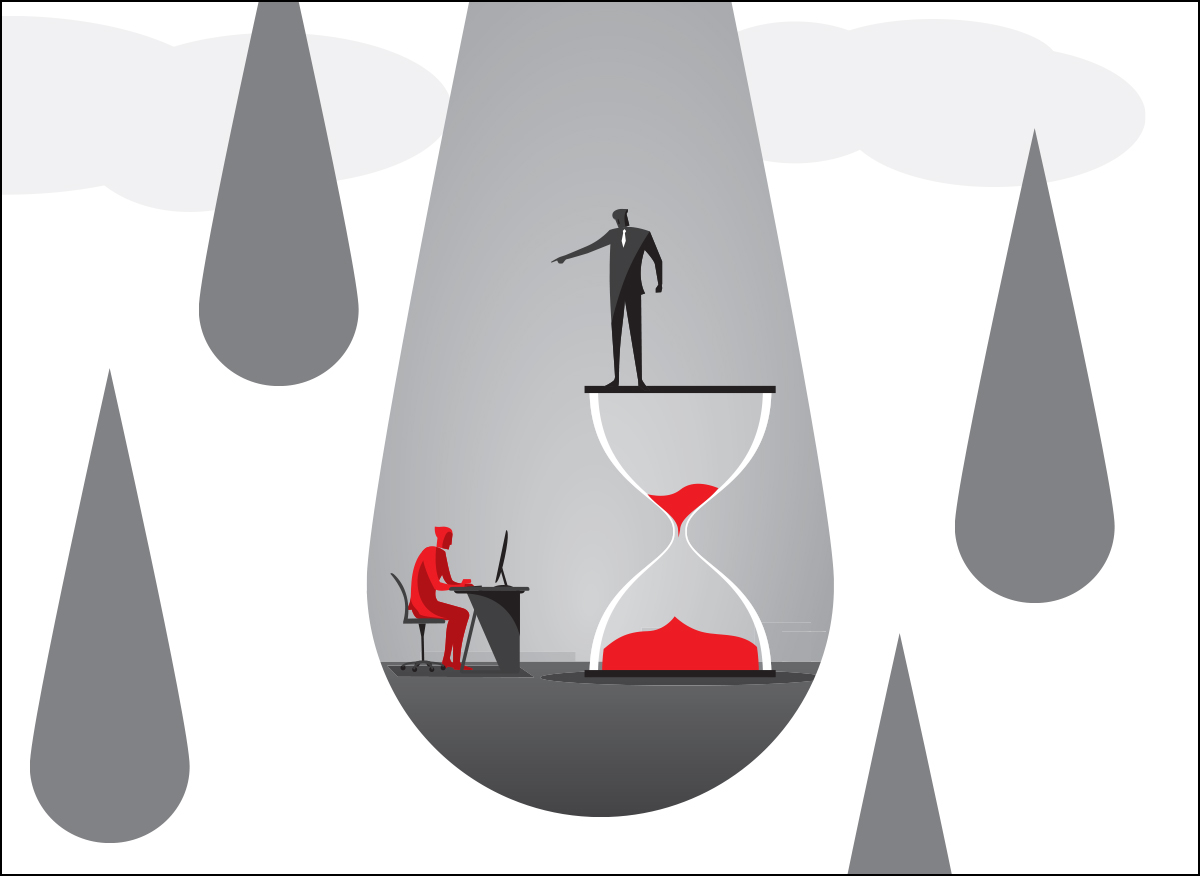As poor mental health has become a greater concern in workplaces, unions have been evolving how they support their members and advance new and better mental health protections in collective agreements.

Unions have occasionally been given a bad reputation for how they handle the mental health challenges of their members. In this short piece, I argue that new approaches to mental health issues are evolving in most unions, in both the public and private sectors. These approaches suggest a new perspective—that unions are already engaged in advocating for the psychological health and safety of their members and that their approach continues to evolve as mental health issues are better understood.
Health and safety, a broader definition
Unions have a strong legacy defending the health and safety of their members from hazards at work. Historically, occupational health and safety struggles took place in mines and factories but, more recently, they are occurring in healthcare, education, and other service industries.
Unions have a strong legacy defending the health and safety of their members from hazards at work.
Union health and safety activists—who analyze the root cause of safety issues—are now trained to recognize psychosocial hazards, that is, to consider psychological safety. Issues such as violence, harassment, and bullying in the workplace have, in part, necessitated this perspective. Unions have also been key players in the significant lobbying efforts that resulted in improving legislation regarding these vital concerns.
What are psychosocial hazards?
Psychosocial hazards refer to work organization: how work is coordinated by the employer, individual workload, and interpersonal workplace relationships that may affect the health of employees. Work organization does not just include how work is arranged, but the agency one has over one’s work, possibilities for advancement, and whether one feels that their work is important and meaningful.
Psychosocial hazards in postsecondary education are directly linked to government-driven neoliberal strategies, including privatization, the underfunding of postsecondary education, attacks on campus unions, and the proliferation of contingent contract employment. These all increase psychosocial hazards and workplace stress.
Psychosocial hazards in postsecondary education are directly linked to government-driven neoliberal strategies.
Stress due to excessive workload is frequently an issue on campus and unions regularly tackle workload problems through negotiated workload committees and collective agreement language. My research indicates that these efforts are achieving some measure of success. However, it must be acknowledged that combating psychosocial risk is complicated because the hazards exist in processes and decision-making that are often initially invisible to members and their unions.
A psychosocial safety lens
Applying a psychosocial safety lens to mental health has certain implications for both a union and its members. First, while psychiatry and the biomedical model frame mental health as an individual problem with individual solutions, this is only part of the story. Of course, people need access to competent health care. However, the biomedical framing of mental illness is limiting; it increases the sense of difference between individuals and augments the desire for social distance by managers and co-workers.
The biomedical framing of mental illness is limiting.
Second, the union’s perspective must include a systemic analysis. The individualization of problems obscures the impact that working conditions have on peoples’ health. In effect, the worker is blamed for becoming unwell. Collective solutions to psychosocial hazards must be sought and, at the same time, accommodations and care must be provided to those in the workplace with diagnosed illnesses—and those suffering from anxiety in these pandemic times.
The individualization of problems obscures the impact that working conditions have on peoples’ health.
What do members need?
Stigma and discrimination against persons with mental health challenges is well documented. Unions must play a dual role of representing individual members who may be experiencing difficulty, while also trying to build solidarity among co-workers. This is not an easy task, but it can and must be done.
Members require accurate information about their rights under the collective agreement and relevant human rights legislation. This includes precise information about return to work provisions in situations where people require time away from the workplace.
Fortunately, during the last decade, many unions have instituted education programs about mental health that cover issues related to stigma and discrimination, in addition to courses on human rights and return to work. These programs teach stewards and activists to develop a skillset that helps them become more empathic in their dealings with union members who are experiencing difficulty. These same leadership skills can also be applied to building solidarity in a department—helping to avoid the interpersonal conflict that often occurs when a colleague is considered not to be pulling their weight.
In a related vein, I would argue that different union officials need to play distinct roles. People have different strengths. While some in union leadership may be responsible for assisting members and building support networks within their membership, union presidents or grievance officers will often be expected to challenge management assertively. This bulldog-like approach is valid and necessary in many labour relations situations, but it is not always the most helpful when dealing with members experiencing mental health challenges.
Finally, it must be noted that union perspectives on mental health are a work in progress and will evolve over time. My research shows promising practices across Canada by organizations including university faculty associations, autoworkers, community college staff, steelworkers, and those in the broader public sector. It may also be useful to note that a Mental Injury Toolkit has been developed through the efforts of unions and the Occupational Health Clinics for Ontario Workers. This kit facilitates conversations between worker representatives and their employers to help identify problematic working conditions and toxic workplaces. This is a scientific, concrete set of tools that give reliable results for action without blaming individuals. While the path to dealing with mental health issues in the Academy may seem steep, progress is indeed being made.










